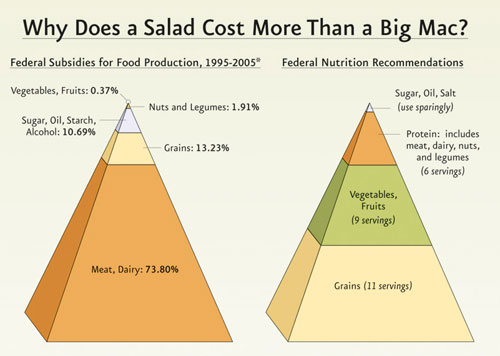Karin Dryhurst
Cities Move Forward, So Should Subsidies
Baltimore joins a growing list of cities, from Miami to Long Beach, seeking updated zoning plans that improve the urban environment for residents. Miami moved forward this spring on its Miami 21 plan, which seeks to make the city more pedestrian-friendly; and Long Beach has installed at least 34 miles of bikeways this year.
The Baltimore plan would ban surface parking lots downtown, a key move to make the area more walkable. Baltimore has been ranked 12th in the country for walkability, but out of 100 points, the city scored a 65, a full 15 points lower than its neighbor Washington, D.C.
The new plan, which would also ease restrictions for small business in residential areas, would recognize urban farms and gardens in an effort to address food deserts. Urban farms and gardens have received a lot of hype recently as ways to create public spaces in cities and improve public health but some say they rely on foundation dollars and are unsustainable. But a recent Grist article on the profitability—or lack thereof—of urban farms made an interesting comparison:
But there's some missing context here: all farms struggle mightily to "thrive in a market economy" -- and relatively few actually do. The most obvious evidence to back up this point is commodity subsidies. If any farm type should be able to thrive in the free market, it would be the large corn and soy farms of the Midwest. Yet over most of the past 20 years, corn and soy prices have hovered under the cost of production, making these farms reliant on billions of dollars in annual subsidies to stay solvent.
Perhaps the federal government should consider making food subsidies more closely reflect their own nutrition recommendations (not to mention reflect where people live and eat in the first place):

More and more cities from Cleveland and Milwaukee to Long Beach and Philadelphia are encouraging urban farms. While urban farms likely won’t make cities completely self-sufficient for fresh produce, it would seem that subsidizing fresh produce in cities and around cities would be a better investment than subsidizing corn and soybeans that go to feed livestock and not people.
Karin Dryhurst: Author Bio | Other Posts
Posted at 1:47 PM, Jun 14, 2010 in
Permalink | Email to Friend










